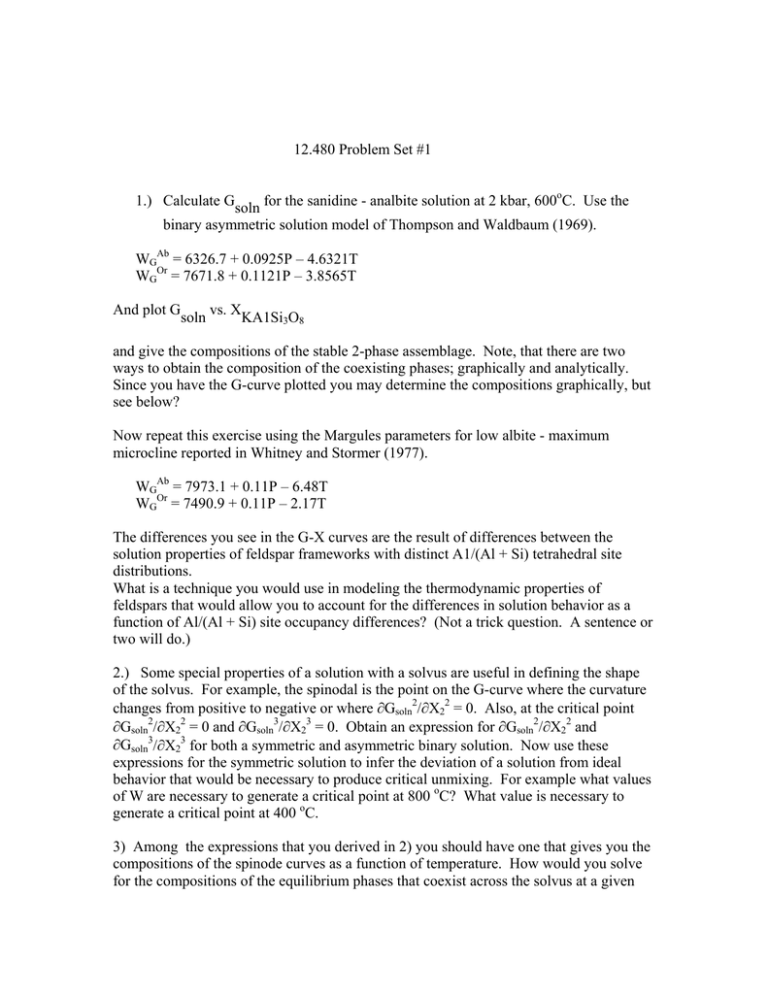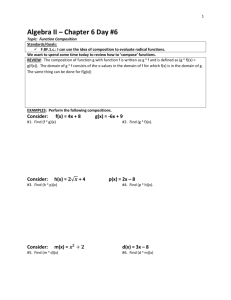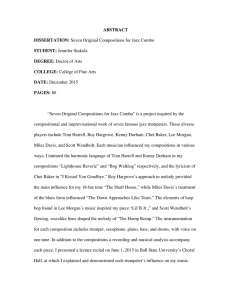12.480 Problem Set
advertisement

12.480 Problem Set #1 1.) Calculate Gsoln for the sanidine - analbite solution at 2 kbar, 600oC. Use the binary asymmetric solution model of Thompson and Waldbaum (1969). WGAb = 6326.7 + 0.0925P – 4.6321T WGOr = 7671.8 + 0.1121P – 3.8565T And plot Gsoln vs. XKA1Si O 3 8 and give the compositions of the stable 2-phase assemblage. Note, that there are two ways to obtain the composition of the coexisting phases; graphically and analytically. Since you have the G-curve plotted you may determine the compositions graphically, but see below? Now repeat this exercise using the Margules parameters for low albite - maximum microcline reported in Whitney and Stormer (1977). WGAb = 7973.1 + 0.11P – 6.48T WGOr = 7490.9 + 0.11P – 2.17T The differences you see in the G-X curves are the result of differences between the solution properties of feldspar frameworks with distinct A1/(Al + Si) tetrahedral site distributions. What is a technique you would use in modeling the thermodynamic properties of feldspars that would allow you to account for the differences in solution behavior as a function of Al/(Al + Si) site occupancy differences? (Not a trick question. A sentence or two will do.) 2.) Some special properties of a solution with a solvus are useful in defining the shape of the solvus. For example, the spinodal is the point on the G-curve where the curvature changes from positive to negative or where ∂Gsoln2/∂X22 = 0. Also, at the critical point ∂Gsoln2/∂X22 = 0 and ∂Gsoln3/∂X23 = 0. Obtain an expression for ∂Gsoln2/∂X22 and ∂Gsoln3/∂X23 for both a symmetric and asymmetric binary solution. Now use these expressions for the symmetric solution to infer the deviation of a solution from ideal behavior that would be necessary to produce critical unmixing. For example what values of W are necessary to generate a critical point at 800 oC? What value is necessary to generate a critical point at 400 oC. 3) Among the expressions that you derived in 2) you should have one that gives you the compositions of the spinode curves as a function of temperature. How would you solve for the compositions of the equilibrium phases that coexist across the solvus at a given temperature (these curves on a T – X diagram are referred to as the binodes)? In question 1) above you did this graphically. Write down the constraints that you would use to solve for the compositions of the coexisting phases for a give set of W’s in an asymmetric binary solution. Can you solve for the compositions of the coexisting phases analytically? For extra credit, develop a program in your favorite language or math library to solve for the binodes in an asymmetric solution.





